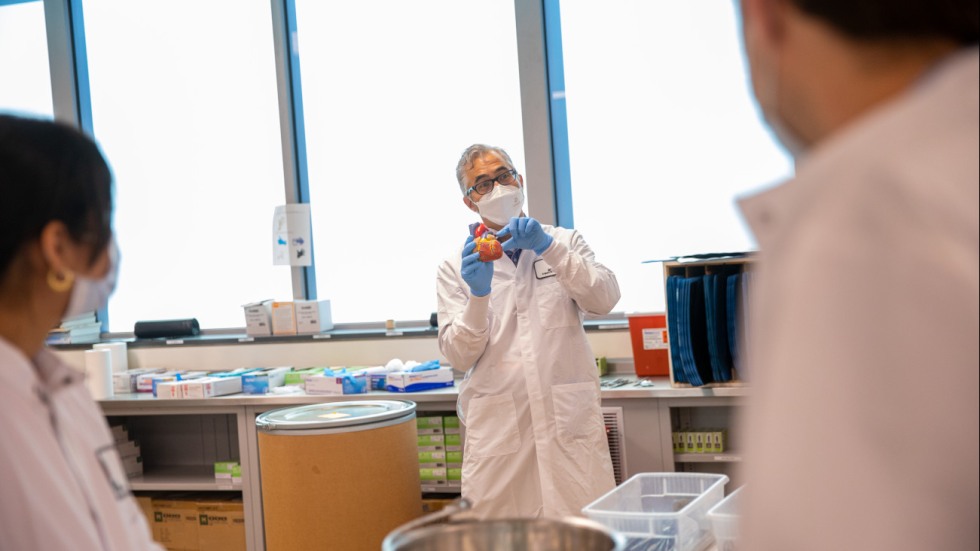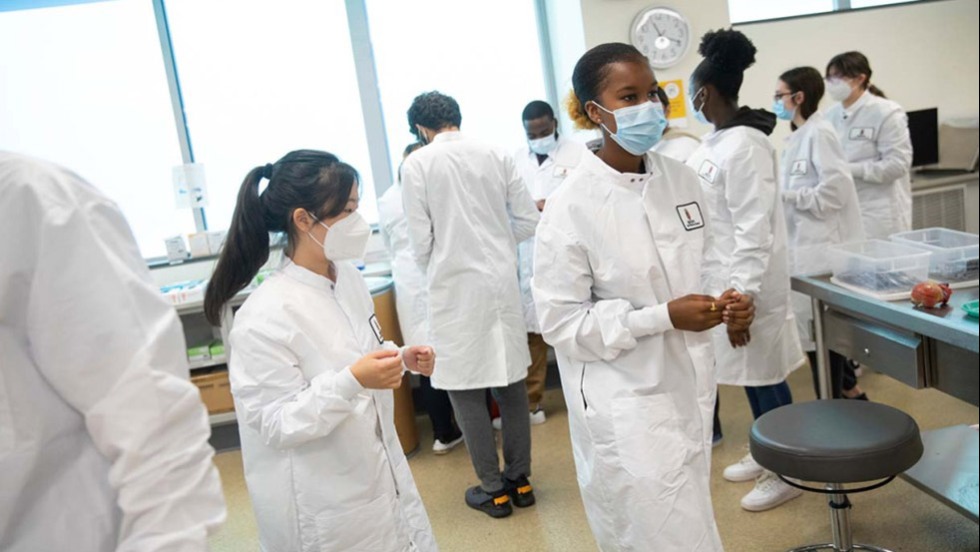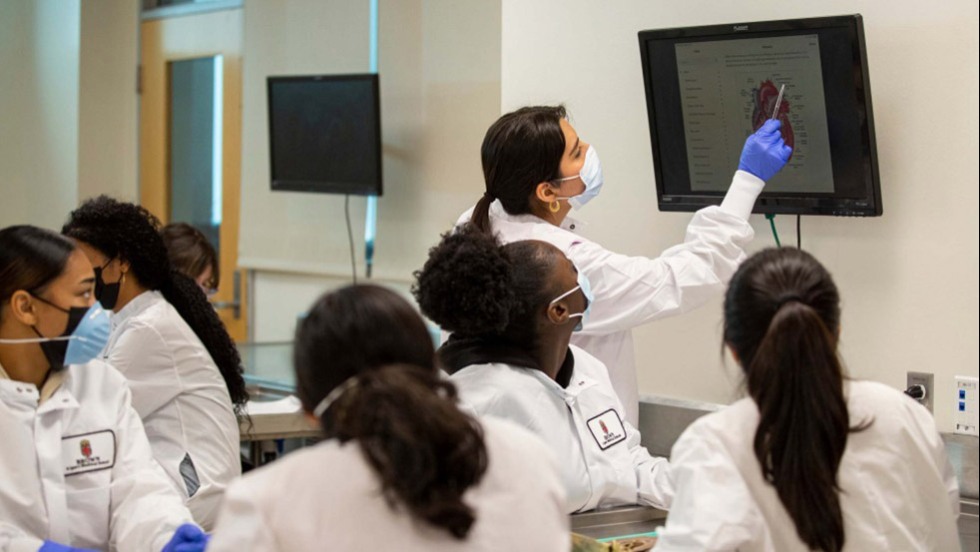LAST FALL, STUDENTS IN CENTRAL FALLS STARTED LEARNING MORE about how good health impacts every aspect of life—and how they can someday become health care professionals.
Calcutt Middle School is now home to a SMART Health and Wellness Clinic and the inaugural site for SMART Plus, an initiative led by The Warren Alpert Medical School that’s designed to spark early interest in health and medicine careers.
Joseph Diaz, MD, MPH, associate dean for diversity and multicultural affairs at the Medical School, says the medical education component is particularly important given Central Falls’ federal designation as having a shortage of health professionals in relation to the population.
“We are extremely excited about the opportunity to introduce Central Falls students to a variety of careers in health care and to increase their sense of possibility in terms of what types of professional futures are available to them,” Diaz says. “This opportunity provides students access to ongoing mentorship and conversations about health and health care careers.”
Calcutt’s SMART clinic, funded by The Warren Alpert Foundation, joins established SMART clinics at two Providence schools. The staff—including nurse practitioners, social workers, and other health professionals—identify and address the physical, behavioral, social, and emotional risks to classroom success, then design and deliver interventions through on-site, real-time health services. They treat all students without regard to insurance or immigration status.
The staff are “trying to meet every need that students might have while they’re in school. Students don’t learn if they don’t feel well, if they’re not in the right mental health headspace,” says Luckson Omoaregba, MS, director of pathways programs at the Medical School. Calcutt’s SMART clinic staff are from the surrounding community, he adds. In the future they plan to offer opportunities for medical students and residents to assist with clinical treatment.
From Clinic to Classroom
DAVID UPEGUI, PHD, A SCIENCE TEACHER AT CENTRAL FALLS HIGH school, has for years invited Warren Alpert medical students to speak to his classes. Last year, for example, Diaz and student Carey Favaloro visited his class on anatomy and physiology, relating the subject to the work of examining patients and making diagnoses.
“Because of their experience and knowledge as medical professionals, they could augment my teaching—for example, they could talk about case studies and situations they’ve dealt with in a clinical capacity,” Upegui says. The SMART Plus pathways program formalizes these connections and reaches even more students, he adds.
“SMART Plus is another way to have Central Falls middle and high schoolers see medical students and clinicians who look like them, or who don’t look like them but are clearly taking an interest in their academic and professional success,” Upegui says. “There’s so much underdeveloped talent and capacity in Central Falls schools, and this is a way to get these young minds participating at a higher level.”
The initiative is part of a broader set of pathways programs led by the Medical School. Calcutt eighth-graders begin learning about health professions in an after-school program called Meeting in the Middle. Medical student volunteers mentor the participants, lead presentations and activities, and organize a health fair where the middle schoolers can meet doctors and nurses, learn about their jobs, and ask how they got where they are, Omoaregba says.
In high school, students continue learning about health and medical careers—some through a biomedical track, which the Medical School supports. Students may also participate in a summer or after-school program, such as Week of Medicine. Students who attend Rhode Island College, Providence College, or the University of Rhode Island may apply to the Month of Medical School program with Brown, apply for a related internship, or connect with mentors they may first have met in class years ago (see sidebar below).
“The SMART Plus initiative gives students a real-life connection,” Omoaregba says. “We bridge the gap between students and the people who are actually doing what they’re learning about. It makes things much more real.” Plus, the programming gives them access to mentors and offers practical steps so students can follow in their footsteps, he adds: “We give them recipes of what it takes to make a career in health care.”
The role of medical students and faculty as mentors and advisers is another important component of SMART Plus. Diaz says med students showed a strong interest in the program even before it got off the ground.
“The students are intensely aware that the health care workforce doesn’t reflect the communities that we’re caring for,” he says. “They want to be involved because this pathways program has the potential to bring more types of people into the field, ultimately diversifying health care professions.”
While SMART Plus is intended to nurture the ambitions of individual students, it also aims to benefit the community in the long term. Pathways programs have been shown to promote a culturally competent, diverse, and prepared health care and biomedical research workforce that enhances patient care and ensures health equity.
“It is the ultimate hope that students who participate in the pathways program will return to their communities as health professionals and serve as role models for future generations of students,” Diaz says.


